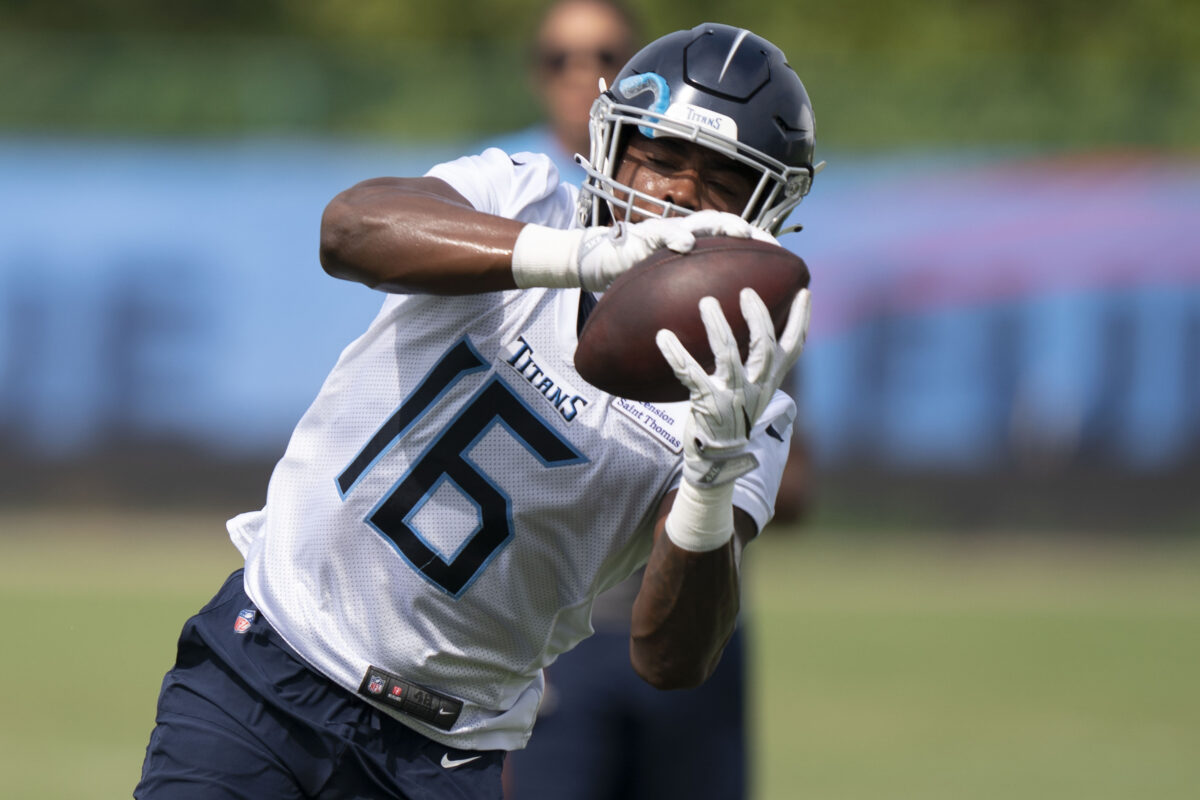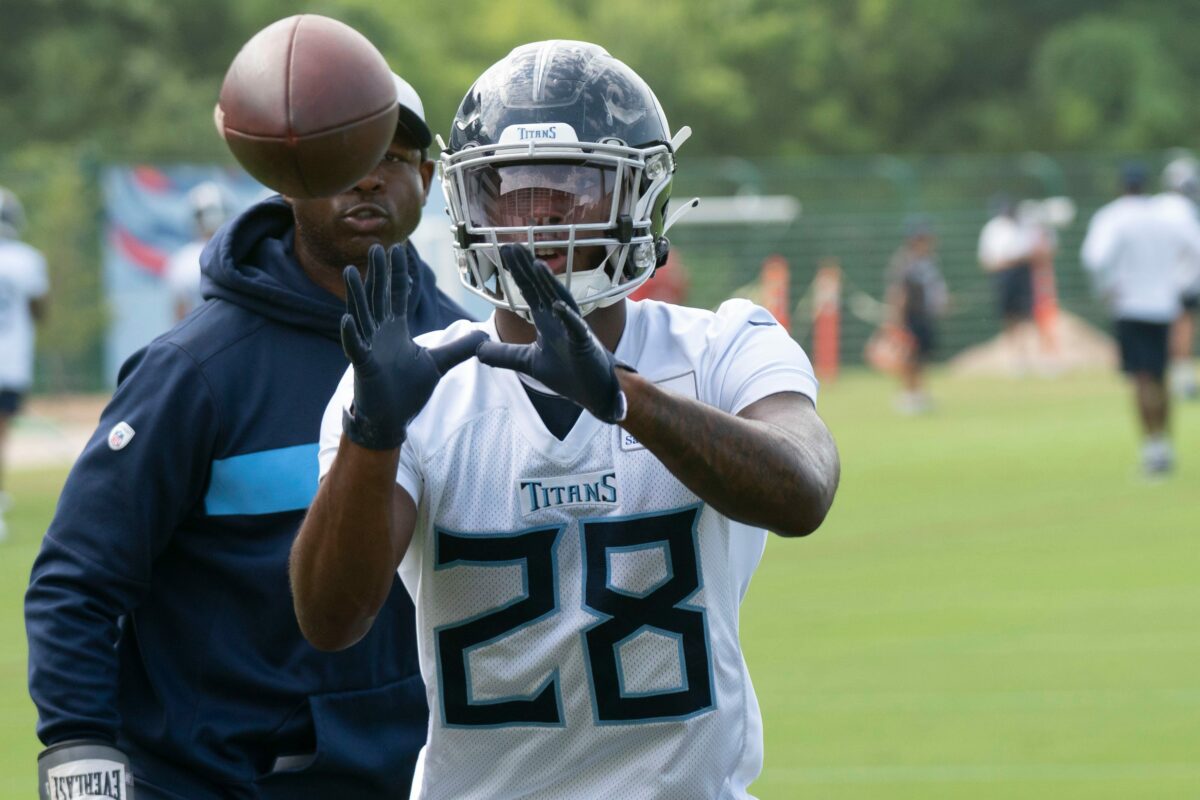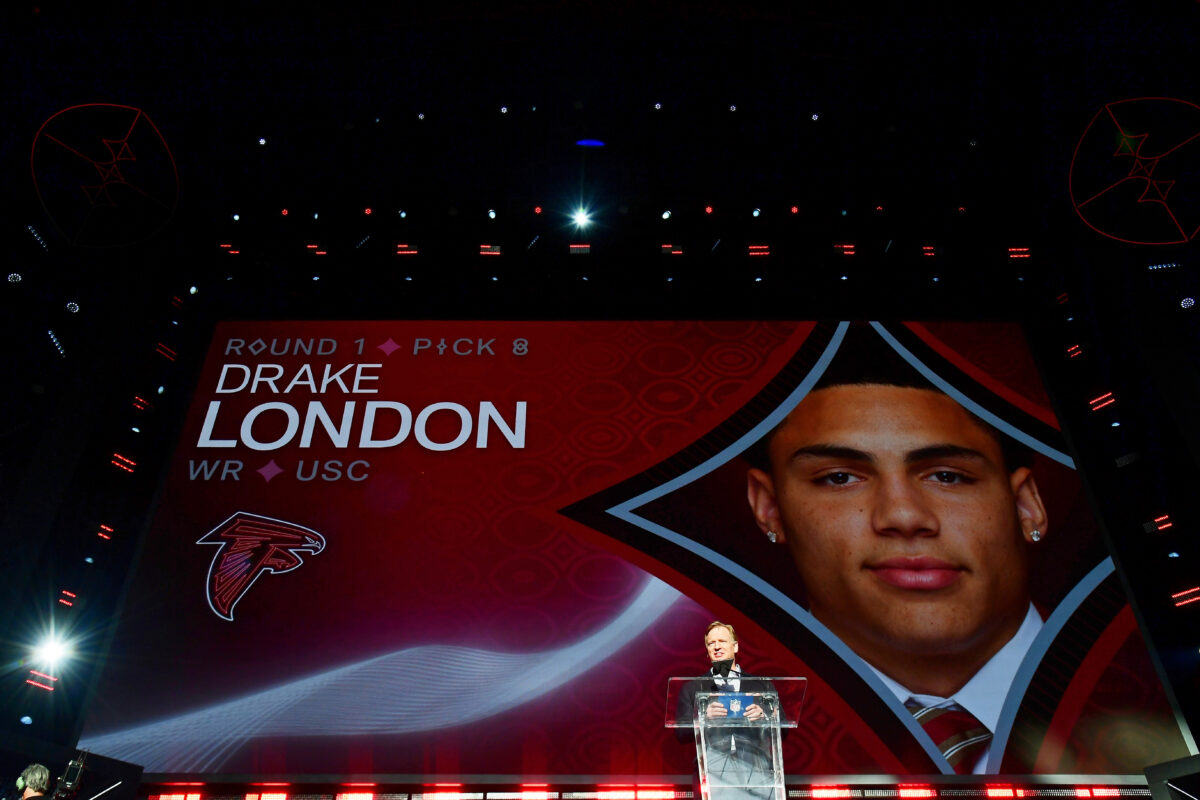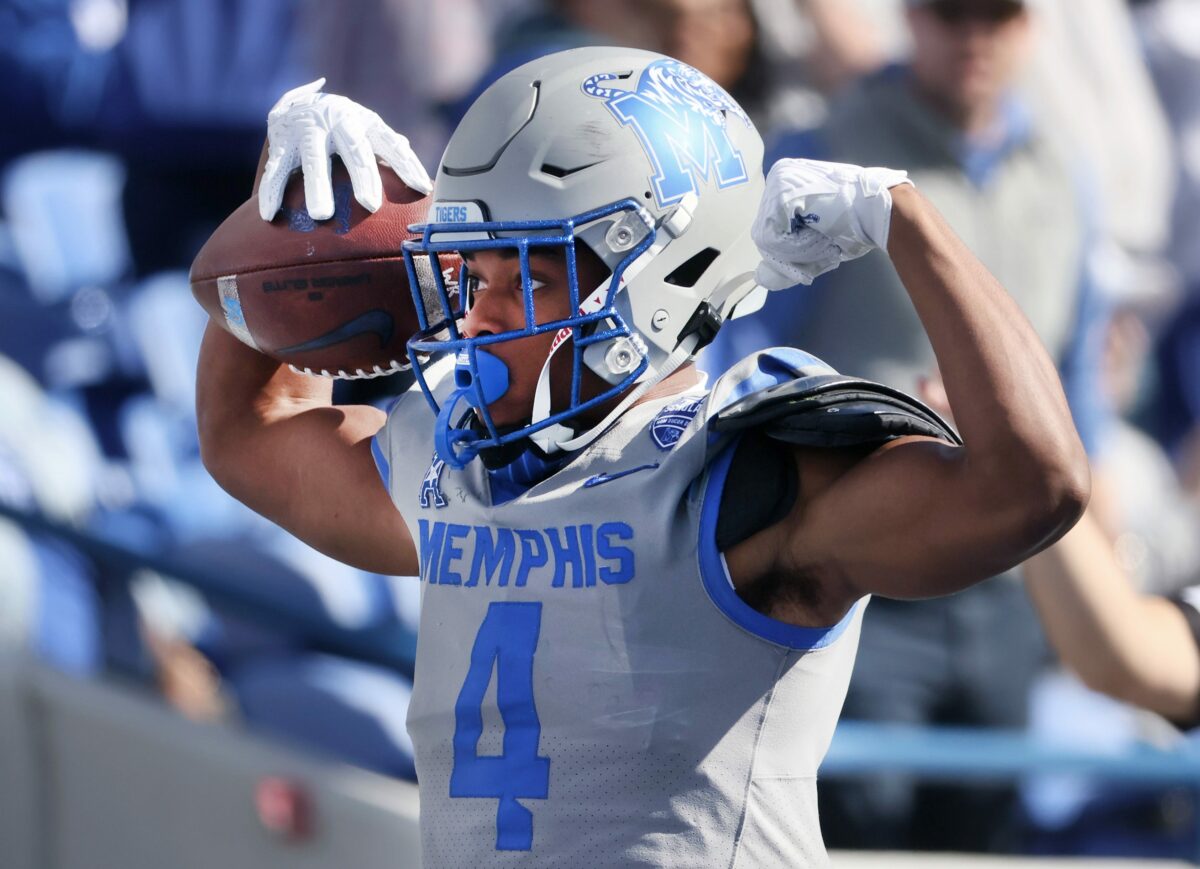While one could stretch out the meaning of which veterans are affected by the 2022 NFL Draft in a multitude of ways, the focus here will be directly to playing time and/or utilization potential among conventional fantasy football assets.
Quarterbacks
Mitchell Trubisky, Pittsburgh Steelers: The Steelers spent their No. 18 overall choice on quarterback Kenny Pickett, which effectively closes the door on any realistic shot of Trubisky starting. There’s still a chance he could begin the year as the QB1, but Pickett is the future and the most NFL-ready rookie passer of this class. Trubisky’s only fantasy utility will come in DFS action if he manages to fend off the Pitt product during the early going.
Marcus Mariota, Atlanta Falcons: Much like with Trubisky, Mariota was a former first-rounder whose career was on the skids until spending time as a backup prior to being signed for an opportunity to start in Atlanta. Unfortunately for Mariota, the NFL draft brought rookie Desmond Ridder into the fold. The Cincinnati standout is widely praised for his maturity. Ridder certainly has a chance to win the job in the summer, and if he doesn’t, Mariota’s injury history suggests the rookie’s turn may not require much of a wait. A work-in-progress receiving corps, a run-first system, durability concerns, and a promising rookie challenger destroy the fantasy appeal of Mariota, should he even secure the job.
Sam Darnold, Carolina Panthers: Darnold was far from being a trusted fantasy commodity, despite the talent around him adding a hint of promise to his otherwise lackluster outlook. Rookie newcomer Matt Corral will put up a scrappy fight in the offseason, though he is likely to open the year as a reserve. The wild card here is whether Panthers head coach Matt Rhule is truly on the hot seat this year. There’s also the injury factor as Darnold has earned a reputation for missing time. No one should be relying on Darnold as a fantasy option, outside of daily games and superflex.
“What if” scenarios
Ryan Tannehill, Tennessee Titans: Between contractual obligations and rookie third-rounder Malik Willis being a project, it likely will take an injury or massive failure on Tannehill’s behalf in order to see Willis play crucial snaps. However, if the former Miami Dolphin is to miss significant time, there may be no reason to get away from Willis. Tennessee can bail on Tannehill’s contract in 2023 for as little as $9.6 million in dead money.
Running backs
Michael Carter Jr., New York Jets: A 2021 fourth-round selection, Carter was one of the few bright spots of this offense last year. He showed versatility and manged to finish as RB28 in PPR over just 14 appearances. The Jets stole the draft’s opening round and then traded up to nab Breece Hall in the early second, adding the nation’s best back to the mix. Hall does everything well and could be a true three-down back, but it’s unlikely he’ll be thrust into such a role right away, if at all. Carter’s fantasy value takes a Mike Tyson punch to the gut. For now, he’s merely a handcuff to the Iowa State star.
Chris Carson, Seattle Seahawks: Carson (neck) is attempting to return from a spinal fusion surgery that doesn’t seem to have a clear prognosis. The veteran saw Rashaad Penny steal the show down the stretch in 2021, and Seattle opted to re-sign the oft-injured, 2018 first-rounder. Penny is likely to be given the bulk of the touches if both veterans are on the field, but the selection of Michigan State’s Kenneth Walker III in Round 2 really works against Carson. There is no reason to hurry him back, and it’s not like Carson was a stranger to injury before the surgery. With the durability concerns for both primary backs, Walker really could emerge as the starter in short order. Carson becomes little better than a late-round gamble after tossing in the uncertainty at quarterback.
[lawrence-related id=465523]
Cordarrelle Patterson, Atlanta Falcons: While running back Mike Davis was the first casualty connected to rookie Tyler Allgeier, Patterson could be significantly impacted, but in a much different way. Davis was flat-out cut shortly after the draft, whereas Patterson’s role could be restricted to seeing mostly third-down work. He is more valuable to the team catching passes out of the backfield than being primarily utilized on early downs, which is a role ideally suited for Allgeier’s skill set. Patterson will remain relevant in PPR, but he’s not going to live up to last year’s RB10 finish. No chance. The selection of Allgeier, in addition to having a pair of running quarterbacks contending to be center, CP is barely a low-end No. 2.
“What if” scenarios
Josh Jacobs, Las Vegas Raiders: The Raiders declined Jacobs’ fifth-year option, effectively meaning this is his last year with the team. Now, that’s not to say he couldn’t be re-signed or franchise tagged with a true breakout year, but the selection of running back Zamir White could make it a moot point if the rookie is indeed the hand-picked replacement. They have similar enough styles where the overall offensive design will treat them interchangeably. Jacobs, in worst-case scenario, could lose his job to injury. He’s a low-tier RB2 but will be riskier than at any point in his NFL career.
Darrell Henderson Jr., Los Angeles Rams: Henderson also has proven to be no stranger to injuries, and the Rams drafted Kyren Williams as the presumed third back entering summer practices. The primary work belongs to Cam Akers, and the top backup job will remain in Henderson’s grasp so long as he’s not on the shelf. Should he suffer an injury of any moderate or worse seriousness, the 2023 unrestricted free agent could find himself without a role.
Wide receivers
Mecole Hardman, Kansas City Chiefs: Few receivers will have their opportunity threatened more than Hardman. KC traded away Tyreek Hill and chose Skyy Moore in Round 2 with clear intentions of him being the Cheetah’s direct replacement. The immediate question is whether Hardman will be presented an earnest chance play Hill’s role as Moore is brought along. Hardman’s career thus far has been inconsistent and underwhelming. In his defense, playing behind target hogs like Hill and Travis Kelce leaves only so many opportunities. He looked every bit the part of Hill’s long-term heir in Hardman’s 2019 rookie season, scoring six times on only 26 grabs and averaging a whopping 20.7 yards per catch. Each of the last two years, his volume increased but Hardman’s average went down and scoring frequency decreased. From a fantasy perspective, though, in PPR, Hardman has actually improved on a per-game rate each year. We’ll monitor this one with an extra watchful eye until its resolution.
Sammy Watkins, Green Bay Packers: Will Watkins even make the final roster? It certainly was up for debate prior to the selection of Christian Watson, and the Packers also spent a Round 4 pick on Romeo Doubs, another talented vertical weapon. Watkins could be cut if he doesn’t outplay the rooks during the summer, and we’re not talking about the model of health here, anyway. Early-summer drafters should shy away from Watkins as anything but a flier.
Curtis Samuel, Washington Commanders: Last year’s season was a total waste thanks to injuries, but the Washington receivers room grew with the first-round choice of Jahan Dotson. He and Samuel aren’t too similar in terms of their utilization, but the Penn State rookie will be granted every chance in the world to assert himself opposite Terry McLaurin. If nothing else, Samuel has been put on notice. His contract means he won’t be released until 2023, although his target share could be diminished into obscurity.
Kadarius Toney, New York Giants: Toney was on a short leash prior to the draft, even being shopped, according to some reports. Despite commentary to the contrary, there’s no question the Round 2 selection of Wan’Dale Robinson — earlier than expected, mind you — puts Toney on notice. This one still could play out with Toney remaining on New York’s roster, yet it’s tough to conceive any scenario in which Robinson’s addition is a positive for Toney’s 2022 fantasy worth.
[lawrence-related id=465509]
Nelson Agholor, New England Patriots: New England grabbed Baylor receiver Tyquan Thornton in Round 2, and the former track star is more than just a fast dude playing receiver. He’s poised to cost Agholor his job, and probably roster spot, with little more required than being competent this summer. Agholor’s fantasy offerings have been a roller coaster over the last few years, so luckily this one doesn’t have a much impact.
“What if” scenarios
Diontae Johnson, Pittsburgh Steelers: Johnson enters the final year of his contract and will command elite money for the position’s standards. He’s looking at something in the neighborhood of $25 million per season in an extension. Sure, he could get a franchise tagging to kick the can down the road, or the Steelers may opt to let him walk into free agency in a bid to save money with rookie Calvin Austin III as the replacement. It won’t necessarily impact Johnson’s 2022 role or fantasy utility, but it’s something to keep an eye on for dynasty purposes.
Tight ends
Logan Thomas, Washington Commanders: Returning from a December knee reconstruction, the nearly 31-year-old Thomas has one productive season to his name. The Commanders selected the future in Cole Turner, but the 6-foot-6 1/2, 249-pounder could find himself in the starting lineup as soon as Week 1. He should be granted the opportunity to share first-team reps with world-beater John Bates in Thomas’ absence this summer. Thomas could cede way before he even gets a true chance for an on-field fight over his starting gig. He’s a TE2, at best, fantasy draft season.
“What if” scenarios
Ricky Seals-Jones, New York Giants: San Diego State tight end Daniel Bellinger has all of the traits needed to develop into a quality fantasy option. That said, rookie tight ends typically don’t offer much of anything for fake football action. Seals-Jones will get the first crack at starting, but he’s fragile. Backup Jordan Akins came over in the offseason from Houston and should be the primary backup. With those points established, Akins is 30 years old with a flimsy resume, and RSJ is a career journeyman. Bellinger’s upside is real, but the road to travel is a long one with plenty of twists and turns ahead. Seals-Jones is not worthy of a selection in conventional formats, despite this favorable system for positional success.













